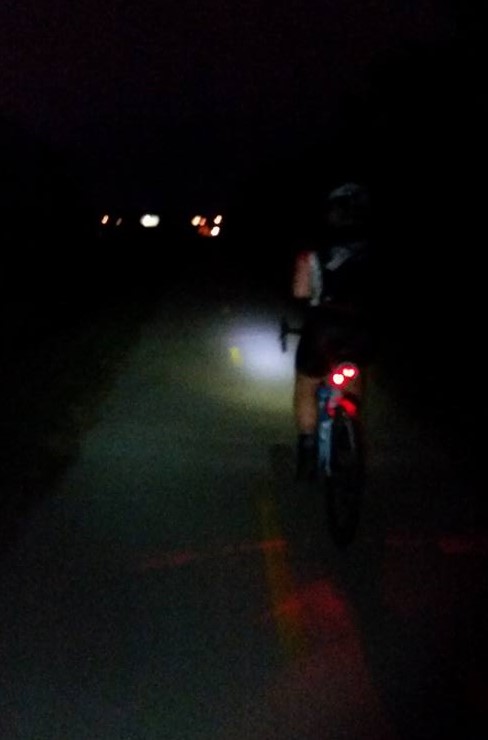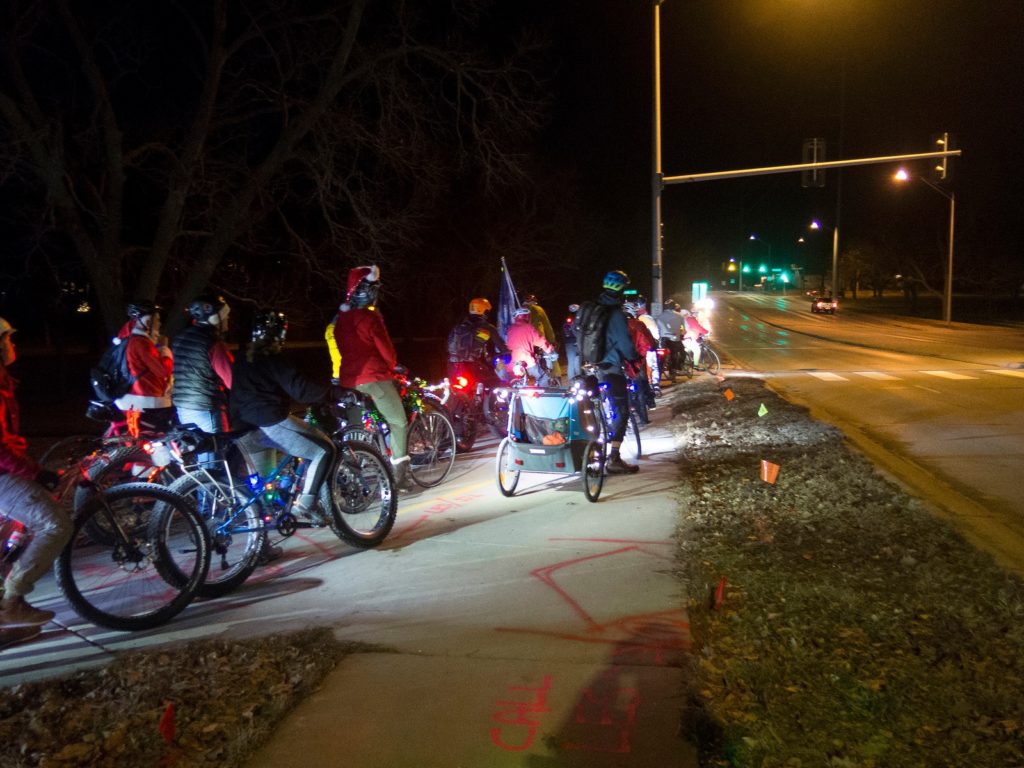The weather is still fine for riding, but sunlight is in increasingly shorter supply. Nebraska law requires reflectors, and for lights to be visible at 500 feet one-half hour before sunrise and one-half hour after sunset. Also- do remember to be humane towards the other cyclists around you on the trails. If you’ve ever ridden in the dark behind someone with a blinking red light, you know how blinding one with high lumens can be. If you have the option, try putting it on a slow pulse, solid red, or off entirely. As for headlights, yes, bright headlights are desirable and often necessary, but when approaching another cyclist, it can be like driving with your brights on. Turn your light to a lower setting, or turn it to the side until the oncoming cyclist is past. It’s surprising the number of other trail users with no lights and no reflective gear. Don’t be like them. Also, it’s easy to get caught out after dark, so try to bring your lights with you even if you think you’ll be home sooner.

Do you know the rest of Nebraska State law in regards to lights and reflectors? No? Then here you go.
Lights and Reflectors: Nebraska Statute 60-6, 318: Equipment on Bicycles; Lights.
(1) When in use at nighttime, a bicycle shall be equipped with a light visible from a distance of at least five hundred feet to the front on a clear night and with a red reflector on the rear of a type which is approved by the Department of Motor Vehicles or a local authority and which is visible on a clear night from all distances between one hundred and six hundred feet to the rear when directly in front of lawful lower beams of headlights on a motor vehicle. A red light visible from a distance of five hundred feet to the rear may be used in addition to such red reflector.
Nebraska Statute 60-6, 319:
Bicycles; reflective device or material.
All bicycles shall be equipped with tires bearing a white or silver retroreflective material on each side or a wide-angle reflector mounted on the spokes of each wheel. Such retroreflective material shall be at least three-sixteenths of an inch wide, shall be affixed as an integral part of the tire or wheel, and shall remain effective for the life of the tire or wheel. The spoke-mounted wide-angle reflector devices shall have a reflective surface of at least two square inches and shall be clear, amber, or red in color. Both the retroreflective tires and wide-angle spoke reflectors shall be visible during the hours of darkness from four hundred feet when viewed under low beam headlights of a motor vehicle under normal atmospheric conditions when the bicycle is traveling at a ninety degree right angle to the direction of travel of the motor vehicle and is directly in front of such motor vehicle. Such reflective devices shall remain visible when the bicycle is turned forty degrees in either direction from such angle and crosses directly in front of such motor vehicle at a distance of four hundred feet.

Riding on the trails after dark can be fun. There are a lot of light options out there now to make your bike be visible and have fun doing it.
Finally, here’s another reason to do your errands and commuting by bike, in the daytime or nighttime.
Biking Like the Dutch Could Erase Entire Countries’ Carbon Footprints
A new study shows how more pro-bike policies could have a major impact on climate change. For those who dream of a world where bike lanes are even more traveled than roadways for cars, a new data point shows how much impact such a shift could have on the climate crisis.
Worldwide, only five percent of daily trips are made by bicycle, but far more could be. According to one climate action group, 50 percent of journeys are less than 3.2 kilometers long, a short enough distance to be covered by bike with relative ease.
Researchers used the Netherlands — a country known for its strong cycling culture — to examine what would happen if more of these brief trips were made by bicycle. The University of Southern Denmark study found that if the entire world pedaled as much as the Dutch do, global carbon emissions would fall by nearly 700 million tonnes per year. That’s more than Canada’s entire carbon footprint.
The authors tout their research as proof that policies for a more cyclist-friendly world could make a major difference in the fight against climate change. “Lessons learned from successful experiences in countries like Denmark and the Netherlands…would be essential. These include but are not limited to, for example, proper bicycle lanes planning and construction, pro-bicycle education and culture, and policies to discourage car use through tax.”
